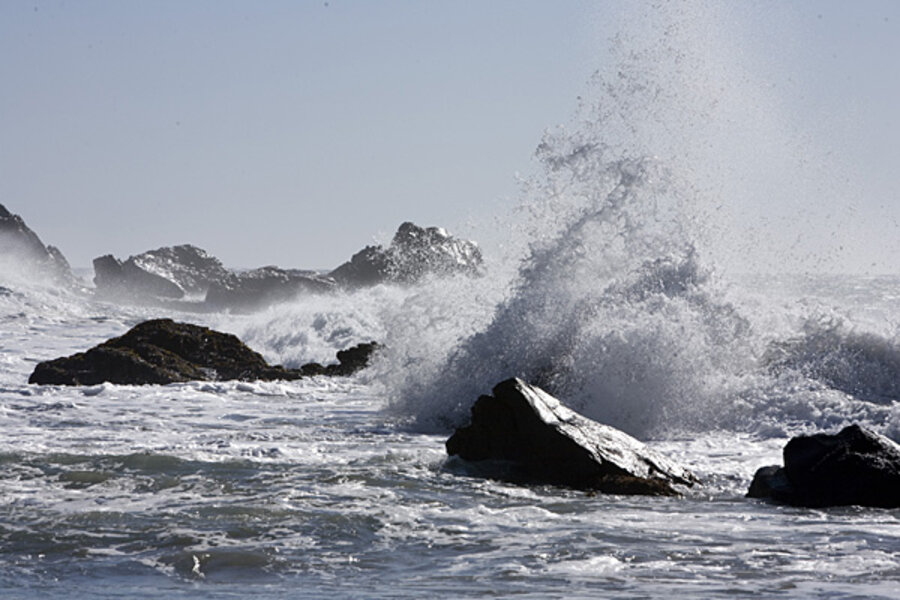Tidal power: Energy's wave of the future?
Loading...
Back in January, the Federal Regulatory Commission decided a good place for a new pilot project for tidal energy was, in all places, the East River in New York City near Queens. FERC said it would let Verdant Power tinker with a system designed to use the river's tidal currents to generate electricity.
FERC seemed to be taking a page from the city's ferry system with its plans for renewable goals by saying that, with all the controversy surrounding shale, just relax oh ye low-carbon advocates, we'll get you there.
FERC said the pilot license was part of a project it cooked up a few years ago to let developers play around with new hydrokinetic technologies. Verdant said it thinks it could spin out enough power to meet the needs of 9,000 or so New York homes without breaking a blade and without killing a fish. (Related article: Riding the Wave of Marine Energy Generation)
Dry holes, natural gas clouds in the Gulf of Mexico, cloudy days and calm weather mean very little for some marine energy technologies. Most are as predictable as lunar phases.
Verdant had its problems – turbines would break and so on. The company said its Roosevelt Island Tidal Energy was the first of its kind in the world to connect to the grid, however. But that's not the waning end of this mariner's tale. A few months after FERC said okay, ScottishPower Renewables announced its wave energy converter had exported 160 megawatt-hours of electricity to the national grid. That system, developed by Pelamis, can work in waves as high at 29 feet. There's nothing like that in the East River.
So why am I, your humble guest, talking about that now? Now is the time to talk about shale, oil-by-rail and the market fundamentals of the drawdown in Libyan crude oil production. Renewable energy, you say, is expensive and mired in bureaucracy. It was not so long ago that solar power was clouded by the bankruptcy of government-backed Solyndra. Now, companies like SunPower and First Solar are reaping the rewards, with share prices rising by 272 percent and 47 percent respectively for the year.
Last week, the Obama administration announced it was throwing $16 million into 17 different projects meant to find a way to capture energy from waves, tides and currents cheaper and more efficiently. The U.S. may be a bit behind in the game but the Energy Department said it viewed wave and tidal energy as a "large, untapped resource" for renewable energy.
To fend off advocacy early birds tired of the tried and true fracking protests, the Energy Department said it was funding university research projects meant to examine everything from the impacts hydrokinetic devices have on fish species to how killer whales respond to the sounds produced by underwater turbines. The bulk of the spending, however, was on research and development meant to make marine power a better utility. That means proving it's worth it to private investors. (Related article: Amid Rising Global Interest in Renewable Energy, Tidal Power to Surge?)
Remember that Pelamis wave system? While Solyndra was going under, a British report in 2011 found the country's marine energy sector might be worth as much as $118 billion, yes billion, and support more than 65,000 jobs by 2050. In the states, meanwhile, shares in Forest Oil Corp. dipped more than 3 percent after it announced the sale of 58,000 acres of shale in the Permian Basin of West Texas. Remember natural gas darling Chesapeake Energy? It's been hemorrhaging assets to help pay off its debt.
While marine and hydrokinetic energy may be quite literally the wave of the future, its moment may be beyond the current horizon. That said, it's predictable, it's easy to get to, and some of the world's most densely populated areas are coastal communities, which means it's cheap to connect to the grid. But it's in the future. If we use the post-Solyndra success of SunPower as a standard, however, high tide for marine energy may be rolling in.
Original Article: http://oilprice.com/Alternative-Energy/Tidal-Energy/Wave-to-the-Energy-Future.html







